Do you have a question about the Yamaha TMAX XP560 and is the answer not in the manual?
Illustrates and labels key warning and informational stickers on the vehicle.
Provides detailed information for various labels found on the vehicle.
Outlines owner's responsibility for safe operation and guidelines for safe riding practices.
Details essential protective gear for rider safety.
Warns about carbon monoxide poisoning and safe loading practices.
Discusses genuine accessories and warns against aftermarket parts.
Advises on tires, transport, and offers additional safe-riding tips.
Emphasizes helmet use, selection, and correct wearing.
Illustrates and labels major components from left, right, and control perspectives.
Identifies and explains handlebar controls, switches, and instrument panel elements.
Explains the function, components, and basic operation of the smart key system.
Details operating range, handling tips, and precautions for the smart key.
Instructions for managing the smart key, its backup, and battery replacement.
Explains how to turn the vehicle power on/off and lock the steering/centerstand.
Describes how to open/close the fuel tank cap and operate the seat lock.
Introduces the vehicle's smart features and the communication control unit (CCU).
Explains joystick operation, MyRide-Link app, and basic audio/phone controls.
Guides on initial setup, Bluetooth pairing, and USB connection for smart features.
Details using the Garmin Motorize navigation and telephone functions.
Provides steps to resolve connection issues with smart features.
Identifies and explains various switches on the handlebars for vehicle operation.
Explains the meaning of various lights on the instrument panel.
Details operation of cruise control (XP560D) and drive mode selection.
Explains the instrument display, pop-up menus, and navigation controls.
Pre-operation checks for fuel, engine oil, and coolant levels and leaks.
Pre-operation checks for front and rear brakes, including operation, pads, and fluid.
Inspecting wheels, tires, brake levers, and throttle grip for proper function.
Verifying chassis fasteners and checking instruments, lights, switches, and sidestand switch.
Checking the condition of the drive belt.
Guidelines for engine break-in, starting procedures, and warnings.
Procedures for starting off, accelerating, decelerating, and braking safely.
Tips for reducing fuel consumption and instructions for parking the vehicle.
Importance of periodic maintenance and information on the included tool kit.
Comprehensive schedule for general maintenance and lubrication tasks.
Information on tire maintenance, pressure, and wheel specifications.
Guides on checking brake lever play, rear brake lock, and pads.
Instructions for checking brake fluid, changing brake fluid, and drive belt inspection.
Steps for checking and lubricating control cables and brake levers.
Procedures for checking front fork, steering, and wheel bearings.
Information on battery maintenance and replacing fuses.
General troubleshooting for vehicle problems like lights, smart key, and overheating.
Procedure for operating the vehicle in emergency mode without the smart key.
Advice on cleaning matte parts and general vehicle care.
Detailed steps for washing, drying, and polishing the vehicle.
Guidelines for storing the vehicle properly to prevent damage and corrosion.
Physical dimensions and curb weight of the vehicle models.
Specifications for the engine, fuel type, octane rating, and tank capacity.
Details on tire sizes, suspension types, and load capacity.
Information on the electrical system voltage, battery, and lighting types.
Details on vehicle identification numbers, engine serial, and model label.
Location of the diagnostic connector and information on vehicle data recording.
Illustrates and labels key warning and informational stickers on the vehicle.
Provides detailed information for various labels found on the vehicle.
Outlines owner's responsibility for safe operation and guidelines for safe riding practices.
Details essential protective gear for rider safety.
Warns about carbon monoxide poisoning and safe loading practices.
Discusses genuine accessories and warns against aftermarket parts.
Advises on tires, transport, and offers additional safe-riding tips.
Emphasizes helmet use, selection, and correct wearing.
Illustrates and labels major components from left, right, and control perspectives.
Identifies and explains handlebar controls, switches, and instrument panel elements.
Explains the function, components, and basic operation of the smart key system.
Details operating range, handling tips, and precautions for the smart key.
Instructions for managing the smart key, its backup, and battery replacement.
Explains how to turn the vehicle power on/off and lock the steering/centerstand.
Describes how to open/close the fuel tank cap and operate the seat lock.
Introduces the vehicle's smart features and the communication control unit (CCU).
Explains joystick operation, MyRide-Link app, and basic audio/phone controls.
Guides on initial setup, Bluetooth pairing, and USB connection for smart features.
Details using the Garmin Motorize navigation and telephone functions.
Provides steps to resolve connection issues with smart features.
Identifies and explains various switches on the handlebars for vehicle operation.
Explains the meaning of various lights on the instrument panel.
Details operation of cruise control (XP560D) and drive mode selection.
Explains the instrument display, pop-up menus, and navigation controls.
Pre-operation checks for fuel, engine oil, and coolant levels and leaks.
Pre-operation checks for front and rear brakes, including operation, pads, and fluid.
Inspecting wheels, tires, brake levers, and throttle grip for proper function.
Verifying chassis fasteners and checking instruments, lights, switches, and sidestand switch.
Checking the condition of the drive belt.
Guidelines for engine break-in, starting procedures, and warnings.
Procedures for starting off, accelerating, decelerating, and braking safely.
Tips for reducing fuel consumption and instructions for parking the vehicle.
Importance of periodic maintenance and information on the included tool kit.
Comprehensive schedule for general maintenance and lubrication tasks.
Information on tire maintenance, pressure, and wheel specifications.
Guides on checking brake lever play, rear brake lock, and pads.
Instructions for checking brake fluid, changing brake fluid, and drive belt inspection.
Steps for checking and lubricating control cables and brake levers.
Procedures for checking front fork, steering, and wheel bearings.
Information on battery maintenance and replacing fuses.
General troubleshooting for vehicle problems like lights, smart key, and overheating.
Procedure for operating the vehicle in emergency mode without the smart key.
Advice on cleaning matte parts and general vehicle care.
Detailed steps for washing, drying, and polishing the vehicle.
Guidelines for storing the vehicle properly to prevent damage and corrosion.
Physical dimensions and curb weight of the vehicle models.
Specifications for the engine, fuel type, octane rating, and tank capacity.
Details on tire sizes, suspension types, and load capacity.
Information on the electrical system voltage, battery, and lighting types.
Details on vehicle identification numbers, engine serial, and model label.
Location of the diagnostic connector and information on vehicle data recording.
| Engine Type | Liquid-cooled, 4-stroke, DOHC, 4-valves |
|---|---|
| Displacement | 562cc |
| Bore x Stroke | 70.0 mm x 73.0 mm |
| Compression Ratio | 10.9:1 |
| Fuel System | Fuel Injection |
| Starter System | Electric |
| Transmission | V-Belt Automatic |
| Rear Suspension | Swingarm |
| Front Brake | Hydraulic dual disc, Ø 267 mm |
| Rear Brake | Hydraulic single disc, Ø 282 mm |
| Overall Length | 2, 200 mm |
| Seat Height | 800 mm |
| Wheelbase | 1, 575 mm |
| Wet Weight | 218 kg |
| Minimum Ground Clearance | 125 mm |
| Torque | 55.7 Nm @ 5, 250 rpm |
| Front Suspension | Telescopic fork |
| Front Tyre | 120/70R15M/C 56H (Tubeless) |
| Rear Tyre | 160/60R15M/C 67H Tubeless |
| Overall Height | 1, 420mm |
| Fuel Tank Capacity | 15 litres |
| Maximum Power | 35.0 kW @ 7, 500 rpm |
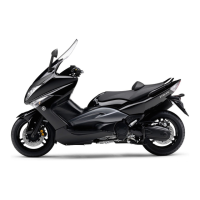
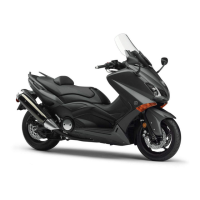

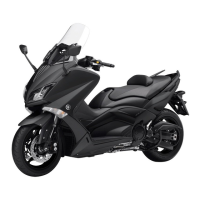
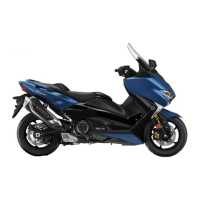

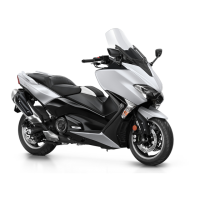
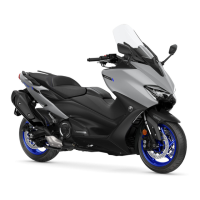

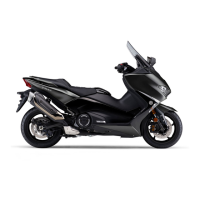

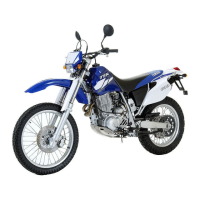
